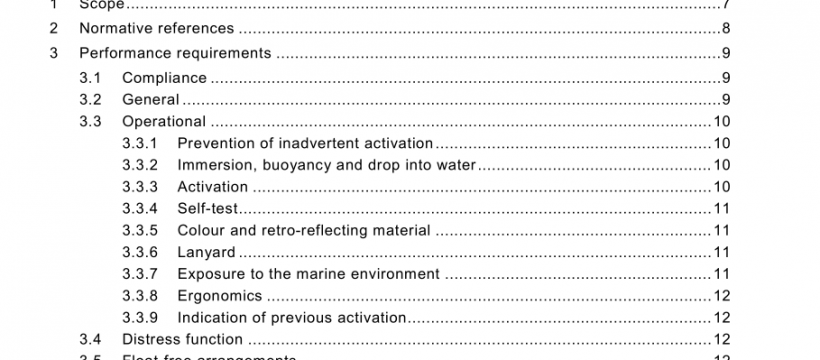AS NZS 4280.1:2017 pdf free download
AS NZS 4280.1:2017 pdf free download.406 MHz satellite distress beacons
5.5.1 .1 Test to prevent release when sea water washes over the unit
(See 3.5.1 b), 3.5.1 c) and 3.3.1 b))
The unit consisting of the satellite EPIRB and its release mechanism installed in its bracket, if any, shall be mounted, on a suitable test fixture, successively in each method intended for mounting on a ship, as described in the equipment manual. A stream from a hose shall be directed at the unit for a period of 5 min. The nozzle of the hose shall have a nominal diameter of 63,5 mm and a water-delivery rate of approximately 2 300 l of water per minute. The end of the nozzle shall be 3,50 m away from the satellite EPIRB and 1 ,50 m above the base of the antenna. The nozzle or the unit shall be moved during the test, so that water strikes the satellite EPIRB in an arc of at least 1 80° perpendicular to the normal mounting position of the unit.
The satellite EPIRB shall not release from its bracket nor shall it automatically activate as a result of the water from the hose stream.
Alternatively, at the manufacturer’s discretion the pre-discharge of the battery (as outlined above) may be replaced by the equivalent extension beyond 48 h of the following battery capacity and low-temperature test. If using this test method the satellite EPIRB manufacturer shall apply a compensation figure to allow for the fact that the extension period due to loss in battery capacity is being carried out at the minimum operating temperature rather than at ambient temperature. This compensation figure shall be substantiated by the manufacturer.
The satellite EPIRB shall be placed in a chamber of normal room temperature. Then the temperature shall be reduced to and maintained at –40 °C ± 3 °C for class 1 or –30 °C ± 3 °C for class 2 equipment for a period of 1 0 h or some such period as may be determined by the type approval authority.
AS NZS 4280.1:2017 pdf free download
